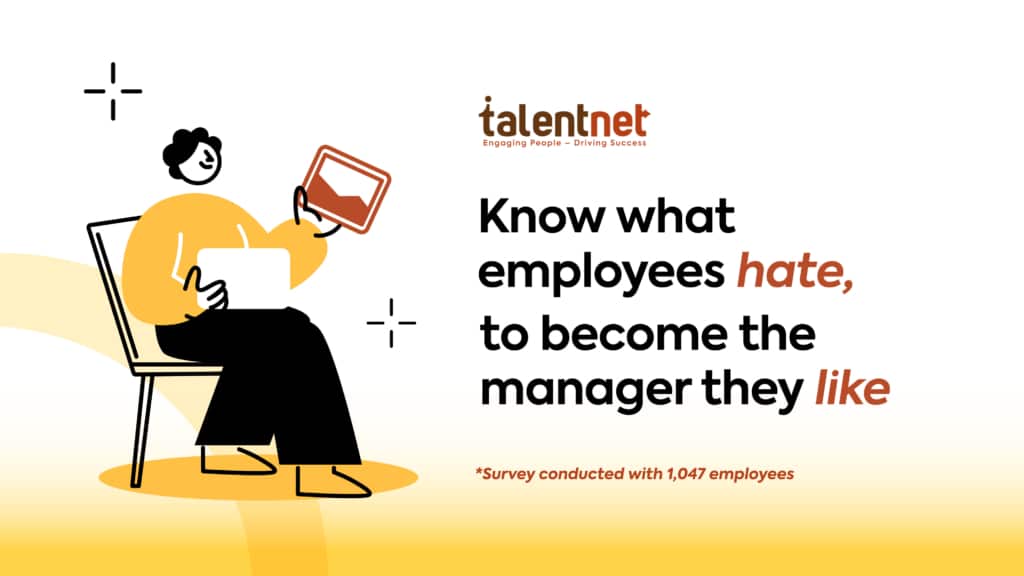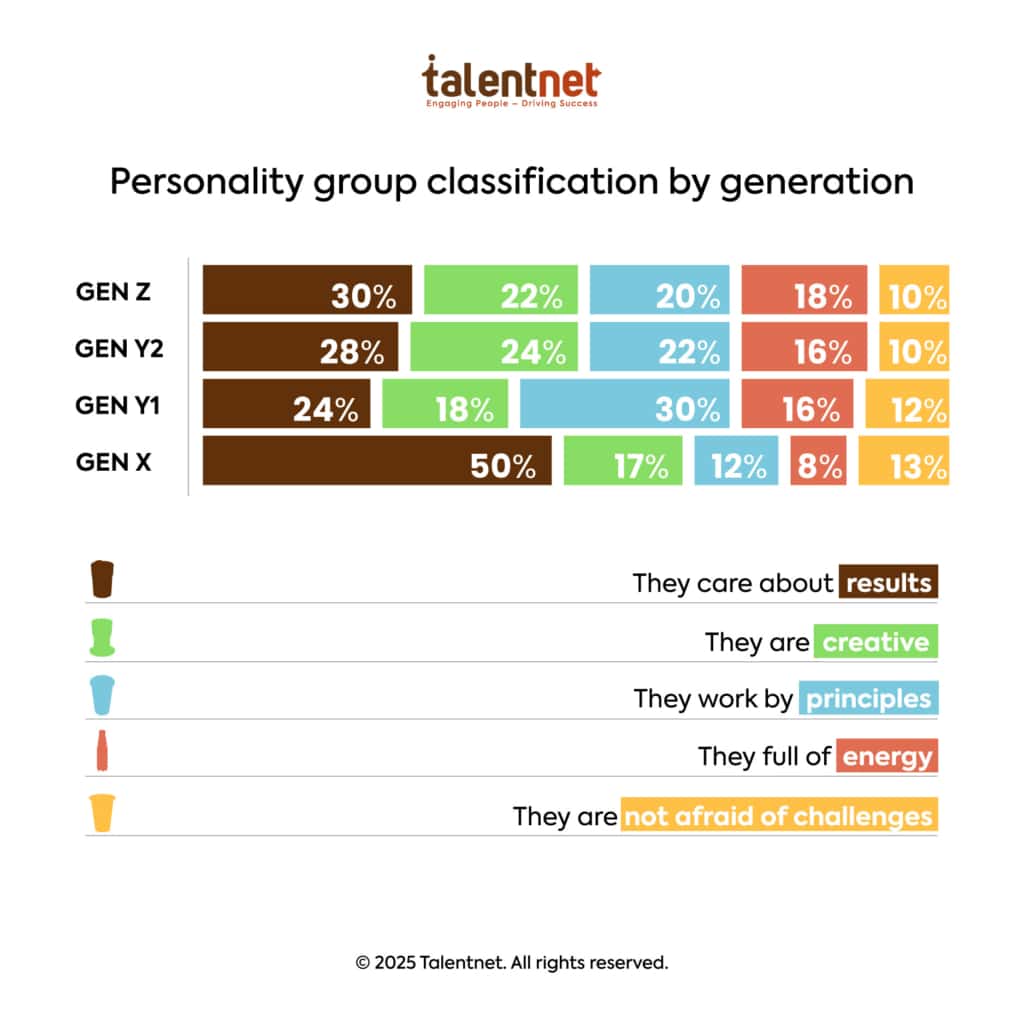Report: Know What Employees Hates to Become the Leader They Like

Jun 5, 2025
Last updated on Nov 28, 2025
Understanding what frustrates employees, which is the cause of the high-reward-still-high-turnover situation, is just as important as knowing what motivates them. Based on a survey of 1,047 employees across generations, Talentnet reveals the leadership behaviors that unintentionally alienate staff — and offers practical insights to help managers foster trust, engagement, and long-term team harmony.

In today’s multi-generational workplace, leadership is more complex than ever due to the diversity in demand and expectation of employees.

Being the top HR consulting firm understanding the Vietnam market and employees, Talentnet conducted a survey of over 1,047 employees across four generations – X (born from 1965 to 1980), Y1 (1981-1989), Y2 (1990-1996) and Z (1997-2002) – to uncover what people dislike most in the workplace. This helps business leaders to know their employees more and avoid conflict
3 Facts that matter
1. Aggressive leaders are considered a red flag in today’s workplace culture
According to Talentnet’s survey, 43% of Gen Y1 and 41% of Gen Z employees identify this as the most unpleasant trait in a manager. This shows that authority based on fear or harshness is no longer effective with the younger workforce. Instead, they seek leaders who can listen, inspire, and create a psychologically safe environment.

2. “Too many meetings” is the top workplace distraction across all generations
While only 30% of Gen Z are bothered by frequent meetings, this figure jumps to 50% among Gen X. This raises an important question: Are frequent meetings truly effective, or are they unintentionally reducing individual and team productivity? Therefore, businesses should carefully monitor the number of meetings employees attend each day — especially those over the age of 35 — to avoid potential negative impacts on performance.
3. Direct and public feedback in corporate culture
In corporate culture, direct and public feedback is often seen as a sign of professionalism — a way to clarify expectations and improve employee performance. However, according to Talentnet’s survey, public feedback delivered in front of others is considered the most uncomfortable form of response. This underscores the need for managers to adjust their feedback style, ensuring it is delivered tactfully and tailored to the individual’s personality and context.
The report also highlights other leadership missteps that may go unnoticed but can cause disengagement over time — such as micromanagement, hovering over employees’ screens, employees’ position in the workplace, etc.
What should business leaders do?
The days of one-size-fits-all management are over. Today’s most effective leaders are agile, emotionally intelligent, and context aware. They adapt their leadership style to suit different generations, roles, and personalities — without compromising on performance or accountability

Talentnet’s new report, “Know What Employees Hates to Become the Leader They Like” is a practical guide for leaders seeking to engage the new generation in a thoughtful, effective way — without compromising their own leadership identity.
In addition to staying updated with market reports and insights, Talentnet’s HR solutions serve as powerful tools to help leaders uncover employee expectations and optimize their management strategies.
One standout offering is Talentnet’s Employee Engagement Survey, built on Mercer’s globally validated methodology. This tool includes 52 research-backed questions across 9 key categories, enabling organizations to accurately identify the needs, concerns, and priorities of their workforce. With clear, data-driven insights, businesses can foster a more engaged culture, boost employee satisfaction, and drive higher performance — all while cultivating a more positive and connected work environment.
Understanding employee preferences can help leaders and their teams thrive at work, while identifying what employees dislike is just as important — as it helps prevent unnecessary tension and disconnect.

Solve your HR problems!
6th Floor, Star Building, 33 Mac Dinh Chi, Saigon Ward, Ho Chi Minh city, Vietnam




